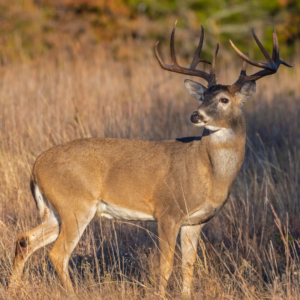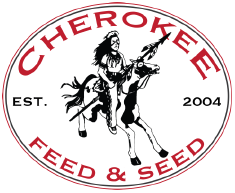 The Impact of Heat Stress on Deer: Heat stress can have metabolic and hormonal effects on ruminants that have significant production impacts. This includes reduced feed intake, growth, milk production and reproduction. By understanding heat stress, when it occurs, and its impact on deer can help improve management decisions.
The Impact of Heat Stress on Deer: Heat stress can have metabolic and hormonal effects on ruminants that have significant production impacts. This includes reduced feed intake, growth, milk production and reproduction. By understanding heat stress, when it occurs, and its impact on deer can help improve management decisions.
Understanding Heat Stress:
Each species has a specific thermoneutral zone (TNZ) where the animal feels comfortable. At temperatures below and above the TNZ, the metabolic rate increases to keep the body warmer or cooler. Due to the increased metabolic rate, a greater amount of energy is needed. It therefore negatively impacts health and productivity parameters. Moisture, wind chill, solar radiation, body condition and haircoat affect the temperature range. In white-tailed deer, the transitional hair coat in the fall offered more protection against temperature extremes than the summer coat and results in a larger TNZ.
Heat stress occurs when the temperature or temperature-humidity indices (a combination of ambient temperature and relative humidity) go above the upper critical temperature of the TNZ. For northern white-tailed deer the upper critical temperature is 68°F during the summer and 77° in the winter.
Effect on Different Species:
White-tailed deer reduce movement. In addition they spend more time lying, seek cooler locations, look for shelter from solar radiation, and pant to dissipate heat during heat stress. As panting increases, there is an increased risk of rumen acidosis. This is because of a decrease in rumen buffering capacity through increased exhalation of CO2 and loss of saliva by drooling.
Elk rarely pant, but sweat to cool off. Deer under climatic stress, like heat, can have a negative effect on nutritional status. This occurs during a time when growth, lactation, and antler production happens. This reduction in productive activity is partly due to reduced feed intake, altered endocrine status, reduced rumination, nutrient absorption and increased maintenance requirements. This results in reduced energy and nutrient availability.
If heat stress occurs and results in a negative energy balance just after fawning, there could be an increased risk of metabolic disorders. In addition, health problems, decreased milk yield and reduced reproductive performance.
Reduced nutrient intake during lactation can also lead to inefficient nitrogen incorporation into microbial proteins in the rumen and loss of amino acids that were mobilized from skeletal muscle. Feed conversion efficiency is reduced. In part due to increased energy expended to rid the body of excess heat and reduced digestibility of higher fiber forages.
Management Activities:
The goal is to reduce the potential impact of heat stress to keep animals eating and in positive energy balance. One of those management activities could be to provide additional cover in the form of improved habitat. In addition, stands of trees or artificial shade structures. Water is important to help dissipate heat. Make sure deer have access to fresh water near every feeder or every 300 acres.
Climate Guard® supplement was identified that support deer during climatic stress events like heat. Climate Guard® supplement is in Purina® AntlerMax® deer feed. AntlerMax® Deer Mineral and Extreme Energy™ supplement is the exception.
In conclusion, do you have more questions about The Impact of Heat Stress on Deer? Visit Cherokee Feed & Seed. We have a great selection of Deer feed and supplies.
Article Source: Purina Animal Nutrition
